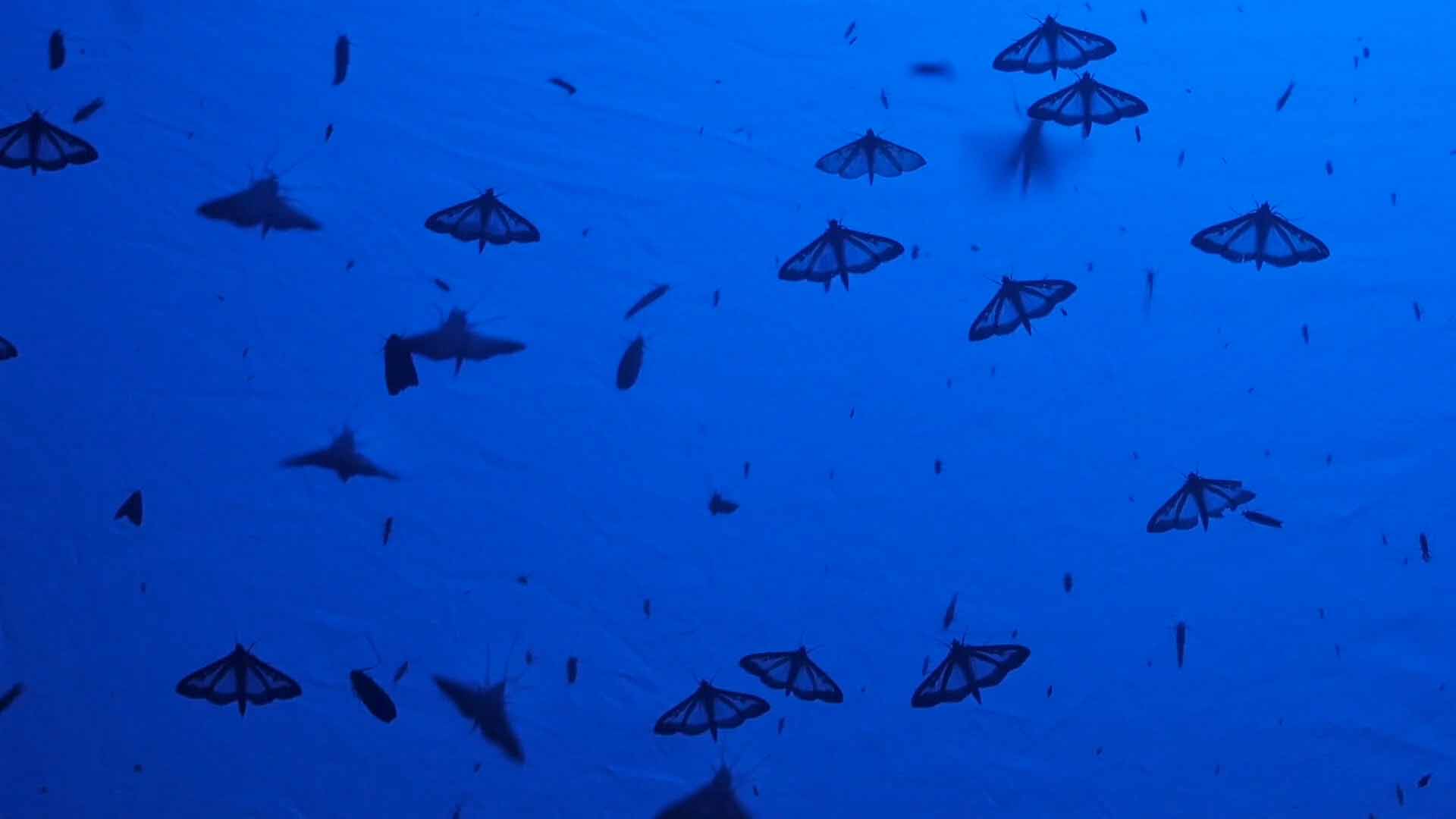
Erpe-Mere
Omringd door het geluid van nachtdieren valt een meisje in een diepe slaap. Geleidelijk aan glijden we in haar droom die ons meevoert naar een kosmische reis door de weilanden van Erpe-Mere.
Het non-narratieve, experimentele Erpe-Mere is een bijzondere studie van het dorp van de filmmaker, Noemi Osselaer. Haar film start met een reeks impressies op het tijdloze tempo van een stoffige zomerdag op het Vlaamse platteland: tractors rijden uit, tussen de bomen is een quad-race aan de gang, boeren werken op het veld, koeien grazen in de wei. Weinig doet vermoeden dat enkele minuten later een nachtmerrieachtige stream of consciousness volgt, op gang getrokken door een meisje dat gaat slapen in haar tent.
De twintig minuten durende psychedelische studie van het Erpe-Meerse landschap is onvoorspelbaar. Osselaer graaft met haar voelsprieten twee kanten op, visueel en auditief. Op beeld passeert veel de revue, voornamelijk in het donker van de nacht: close-ups van insecten, weides met of zonder dieren, maïsvelden, plattelandsweggetjes. Een constante zijn de koeien: ’s nachts slapen ze niet op stal, maar grazen ze ongestoord verder in het gras. Zie je ze niet, dan loeien ze wel.
Osselaer plaatst het auditieve prominent op de voorgrond: de wind door de bomen, getjirp van krekels, gekwaak van kikkers, geloei van koeien. Alles heeft de gloed van een rustige avond na een hete zomerdag, maar in deze droom (of nachtmerrie) worden de geluiden, hoewel nog steeds herkenbaar, aangevuld en vervormd alsof ze uit een unheimliche parallelle wereld komen. Een zwoele zomer, maar dan vreemd en onheilspellend.
De tandem beeld en geluid, of soundscape en beeldcollage, spelen hier de hoofdrol. De mutatie van het charmante Vlaemsche platteland werkt bevreemdend, en wordt bij momenten eng en dan weer een tikje humoristisch. Osselaers trage ritme bouwt op naar een hypnotiserende, psychedelische climax, maar de film ontspoort nooit.

